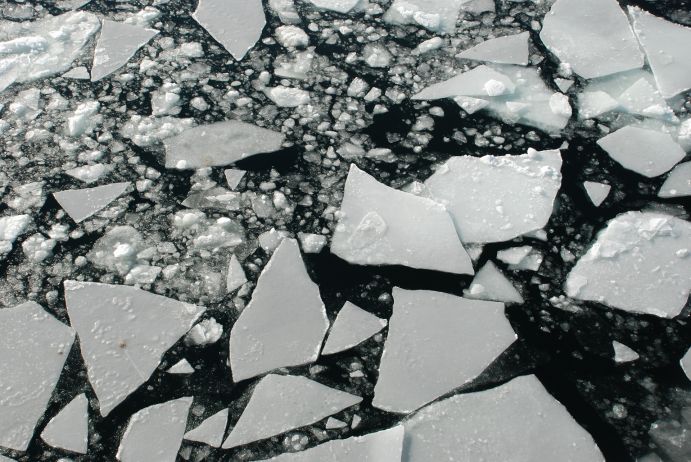SSIP - Seamless Sea Ice Prediction
The Arctic is warming twice as fast as the rest of the globe.
In the southern high latitudes, pronounced warming hitherto has been observed only in West Antarctica, but sea-ice decline will ultimately come also to the Antarctic. For the late northern summer, when the Arctic sea ice extent shrinks to its minimum every year, climate projections indicate that the Arctic Ocean will be largely ice-free by the mid-21st century, with important implications for the near-future development of human activities in the High North.
The increased accessibility of the Arctic comes with both opportunity and risk. The volume of marine transport through the Arctic could increase rapidly in the coming decades, given the ∼50% shorter shipping distance between Northern Europe and important Asian ports like Shanghai and Yokohama compared to the route through the Suez Canal. Other economic branches with a keen interest in a more accessible Arctic include fisheries, tourism, and resource extraction. Tourism is becoming more and more popular also in the Antarctic, with ∼5 times more visitors today compared to 20 years ago.
Increased human activity in polar regions implies more exposure to harsh environmental conditions brought about by quickly developing Polar storms, sudden onset of fog or blowing snow, or unforeseen sea-ice changes. To enable a sustainable development, reliable predictions of the Polar environment, including sea ice in particular, are indispensable, especially in order to reduce risk of human and environmental disaster and to enable efficient emergency response. Yet our current skill to predict the evolution of sea ice are very limited.
Project Objectives
The overarching goal of our research is to advance sea-ice prediction capacity on timescales from hours to years and beyond. Numerous research avenues will be taken towards this goal, along the way how we observe the sea ice as well as the atmosphere and the ocean, how we feed these observations into our forecast models in a process called data assimilation, and how our models simulate the physics that determine how the sea ice evolves in the future.
We tackle these themes from multiple angles with a seamless approach to sea ice prediction: We develop and exploit a seamless sea-ice prediction system where we simulate ice-covered waters in detail whilst accounting for long-range feedbacks by resolving other parts of the earth in moderate detail. This allows us to apply our forecast system on a wide range of timescales from days to years and beyond. At the same time, we feed observations into our climate model with a powerful ensemble data assimilation technique. The essence of this approach is to generate and analyse multiple simulations at the same time to maximise the information we can extract from observations about the state of the climate system. This allows us to start our predictions from very accurate initial conditions.
With this approach we are ideally equipped to address science questions such as the following ones:
- How can we make best use of observations of the sea ice, atmosphere, and ocean?
- What kinds of observations at which places and times are most valuable?
- How shall we handle observations of different compartments in a consistent way, for example given that the atmosphere varies much faster than the ocean and ice?
- What physics need to be added to our models at what detail to allow skilful predictions?
- How do we best distribute the grid resolution between polar regions and other parts of the world?
- How do we best measure the skill of sea-ice predictions?
- What are the limits of sea-ice predictability in the first place, and how much potential is out there to improve our forecast systems?
Project Management
Dr. Helge F. Goessling
Alfred Wegener Institute (AWI)
Helmholtz Centre for Polar and Marine Research
Division Climate Sciences, Section Climate Dynamics
Am Handelshafen 12, D-27570 Bremerhaven
Tel.: +49 (0)471-4831-1877
E-Mail: helge.goessling@awi.de
Homepage
Last updated on




